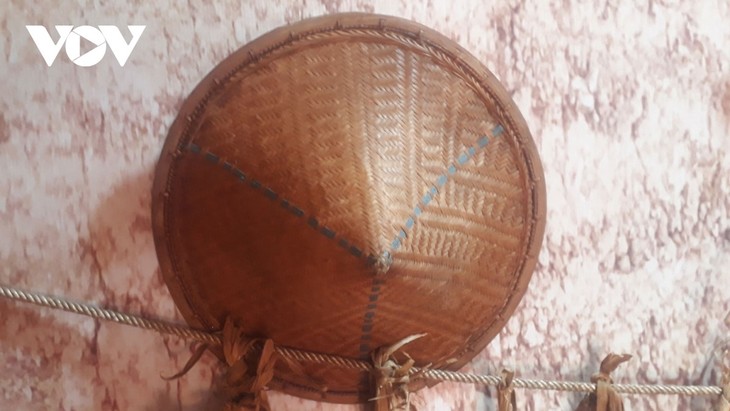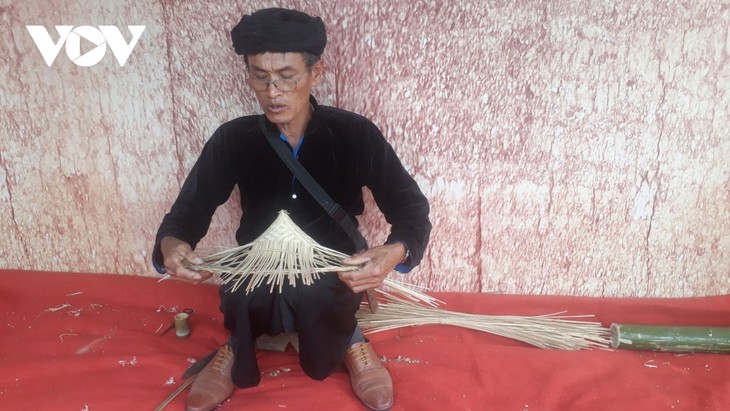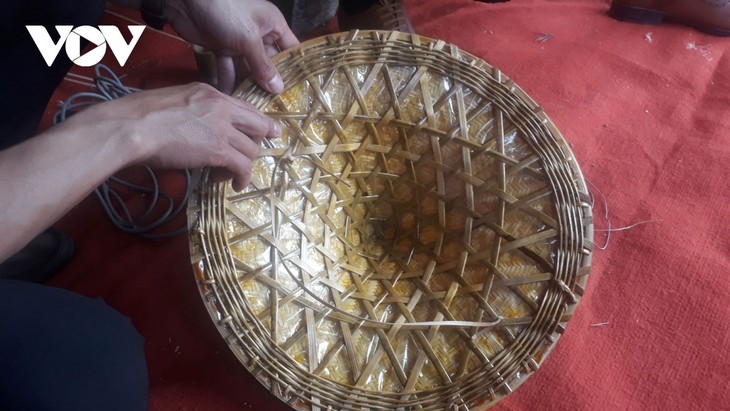(VOVWORLD) - The Ha Nhi ethnic people in Muong Nhe district, Dien Bien province, have upheld many customs and cultural traits for generations. Among them is the woven hat, an essential item in their daily life and spiritual practices.
 A traditional hat of the Ha Nhi in Muong Nhe district, Dien Bien province (photo: Tong Duc Anh/ VOV) A traditional hat of the Ha Nhi in Muong Nhe district, Dien Bien province (photo: Tong Duc Anh/ VOV) |
Both Ha Nhi men and women wear woven hats in all kinds of weather, whether sunny or rainy, when working in the fields. After getting wet, the hats are hung above the woodstove. The heat allows them to dry quickly and the smoke increases their durability, sometimes lasting for several years.
According to Ha Nhi custom, when a girl gets married, she wears traditional ethnic attire, carries a bamboo papoose on her back, and dons a woven hat. The hat must remain securely on her head and must not fall off during the entire journey to her husband’s house. Chang Kho Po of Sen Thuong commune said: “When a daughter marries, her parents will make a hat for her as a dowry. She must wear it from her parent’s home to her husband’s house before the wedding officially takes place. The hat is kept carefully as it’s part of the Ha Nhi’s traditions.”
The Ha Nhi woven hat is smaller than the conical hat of the Kinh people. It’s slightly curved slats form from the top to the brim. It’s made of Giang, a type of bamboo growing abundantly in the forest. The Giang plant is tough, flexible, and resistant to breakage, splitting, and termites.
 Craftman Chang Chang Sinh in Sen Thuong village (photo: Tong Duc Anh/ VOV) Craftman Chang Chang Sinh in Sen Thuong village (photo: Tong Duc Anh/ VOV) |
Chang Chang Sinh, a skilled hat weaver in Sen Thượng village, said the woven hat is so deeply integrated into the lives of the Ha Nhi people that everyone learns to make them from a young age. He learned the craft from his father and grandfather, and was able to make hats by the age of 12.
Mr. Sinh continues to weave hats for his family, as well as for villagers and cultural performance teams. “To get weaving slats for a hat, we must go to the forest to cut Giang bamboo plant that is unbroken and intact. Because the broken tips make the slats brittle and prone to termites. The bamboo plant is dried and shaved smooth with a sharp knife. Smoothing the slats is the hardest step which requires meticulous, skillful work. The inner frame of the hat is hard, while the outer layer is woven tightly to prevent water from leaking in. It takes about three days to complete a hat.”
 The inside lining of the Ha Nhi's hat (photo: Tong Duc Anh/ VOV) The inside lining of the Ha Nhi's hat (photo: Tong Duc Anh/ VOV) |
Sen Thuong village has about 100 Ha Nhi households. Many skilled weavers like Chang Chang Sinh have opened classes to teach young people the craft.
“Any young person who wants to learn is welcome. I will devote all my effort to teaching them the traditional craft of the Ha Nhi in order to preserve the cultural identity of our ethnic group.”
Chang Chang Sinh and others who cherish Ha Nhi culture hope to further promote the craft of hat weaving and the Ha Nhi culture, passing it down through generations.